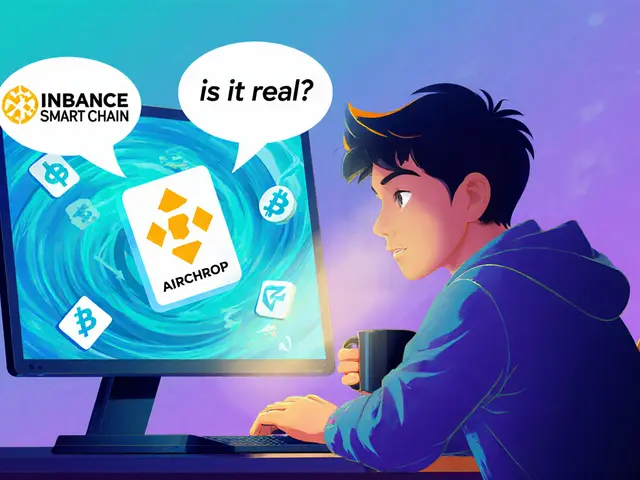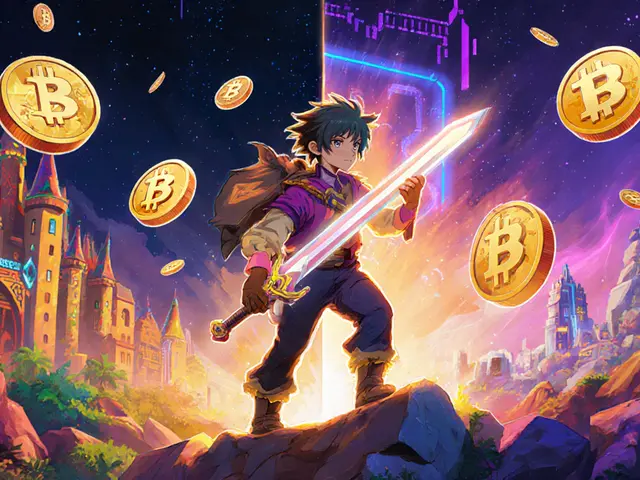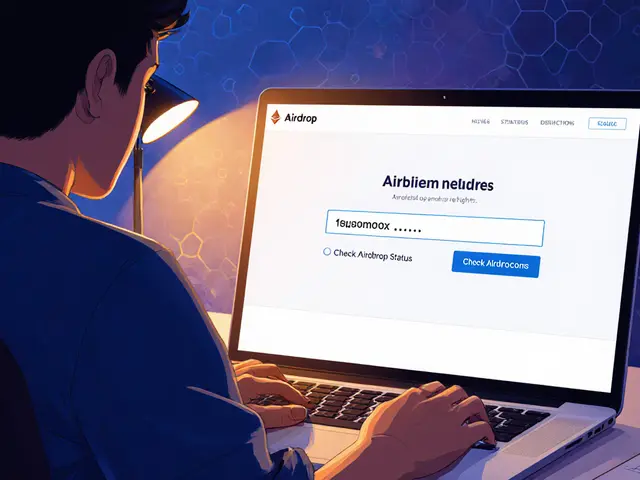Smart Contract Interaction Tracker
Explore how different blockchains handle smart contract interaction tracking
Ethereum
Uses LOG opcodes for event logging with indexed topics for searchability.
Gas cost: Low for indexed topics
Hyperledger Fabric
Relies on endorsement policies and transaction validation for audit trails.
No gas fees
Solana
Program logs emitted to runtime with filtering by program ID.
Very low fees
Track Your Contract Interactions
Tracking Dimensions
- Transaction-Level: Caller address, function name, gas spent, success status
- State-Change: Before/after values of storage variables
- Event Emission: Logs all events with topics and data payload
- Cross-Contract: Call stack tracking for complex interactions
Keeping an eye on what’s happening inside a smart contract can feel like watching a crowded kitchen through a tiny window - you see the dishes being moved but miss the subtle steps that make the meal succeed. Smart contract interaction tracking changes that picture. It captures every call, state change, and event a contract emits, turning the opaque blockchain kitchen into a transparent, auditable workspace.
Why tracking matters today
In 2025, decentralized finance (DeFi) platforms manage over $12trillion in assets and NFT marketplaces record billions of trades each month. When a single bug or exploit can drain millions, firms rely on interaction logs to spot anomalies fast. Tracking also powers analytics tools that tell a trader which liquidity pool is most profitable, or lets a supply‑chain manager verify a product’s provenance without questioning a single vendor.
Key Takeaways
- Interaction tracking logs function calls, gas usage, state mutations, and emitted events.
- Ethereum, Hyperledger Fabric, and Solana each provide native mechanisms (LOG opcodes, endorsement policies, transaction logs).
- Tools like Etherscan, Chainlens, and Polygonscan surface raw logs, while advanced platforms add AI‑driven anomaly detection.
- Privacy‑preserving techniques (zero‑knowledge proofs) are emerging to keep sensitive business data hidden while still offering full audit trails.
- Scalability, cost, and cross‑chain compatibility remain the biggest hurdles for real‑time tracking.
How blockchain records interactions
Every blockchain maintains two layers of data: an immutable ledger of historic transactions and a world state that holds the latest values of each contract’s storage variables. When a contract runs, it can put, get, or delete entries in that state. At the same time, the transaction is written to the ledger, creating a permanent audit trail.
Smart contracts also emit events, which act like on‑chain log statements. An event can contain up to four indexed topics that make it searchable without scanning the entire block. This indexing is why developers love events: they provide rich, low‑cost data that off‑chain services can parse instantly.
Tracking dimensions you need to monitor
- Transaction‑level tracking: captures caller address, function name, input parameters, gas spent, and success or revert status.
- State‑change tracking: records before‑and‑after values of key storage variables, useful for spotting unexpected balance shifts.
- Event emission tracking: logs every event a contract fires, preserving the topics and data payload for downstream analytics.
- Cross‑contract interaction tracking: follows call stacks when Contract A invokes Contract B, revealing complex execution paths.
Each dimension feeds a different piece of the security and business puzzle. Missing any one can blind you to fraud, bugs, or performance bottlenecks.
Native tracking mechanisms by platform
| Blockchain | Tracking Feature | Implementation Detail | Cost Consideration |
|---|---|---|---|
| Ethereum | Event logging via LOG0‑LOG4 opcodes | Indexed topics (0‑4) + data payload; searchable via bloom filters | Gas cost per byte of data; efficient when using indexed topics only |
| Hyperledger Fabric | Endorsement policies + transaction validation | Chaincode writes to the ledger; endorsement signatures provide audit trail | No gas; transaction size impacts performance on ordering service |
| Solana | Program logs via runtime | Logs emitted to runtime; can be filtered by program ID | Very low fees; high throughput can still generate massive log volume |
Tools that turn raw logs into actionable insights
Basic explorers like Etherscan, BscScan, and Polygonscan let you view transaction histories and event logs for a single address. They’re great for quick look‑ups but lack deep analytics.
For power users, platforms such as Chainlens provide dashboards that aggregate events, flag abnormal patterns, and even suggest gas‑saving optimizations. Some newer services blend AI models to predict potential re‑entrancy attacks or front‑running opportunities before they happen.
Real‑world use cases
- DeFi risk management: By watching interaction logs of lending protocols, a fund can automatically reduce exposure when a sudden spike in liquidations appears.
- NFT royalty enforcement: Marketplaces track transfer events to ensure creators receive the correct percentage on every resale.
- Supply‑chain verification: A logistics firm records each handoff as an event on a private Hyperledger Fabric network, giving retailers immutable proof of provenance.
- Healthcare data sharing: Hospitals write consent events to a permissioned chain, letting insurers verify patient authorization without exposing medical records.
Security benefits of comprehensive tracking
When you capture the full call stack, you can spot malicious patterns early. For example, a re‑entrancy attack typically shows a rapid sequence of the same function being called back‑to‑back. Anomaly‑detection engines scan the event stream for such signatures and raise alerts within seconds.
Front‑running and sandwich attacks leave a tell‑tale trail of multiple transactions competing for the same block slot. By correlating timestamps, gas prices, and caller addresses, you can flag traders who consistently jump ahead of market orders.
Challenges you’ll face
Scalability: High‑throughput chains generate gigabytes of logs each day. Storing and querying that data demands specialized time‑series databases or scalable cloud storage.
Privacy: Events often expose business‑critical details (e.g., loan amounts, inventory levels). Zero‑knowledge proofs and off‑chain aggregation are emerging solutions, but they add complexity.
Cost: Every byte logged on Ethereum costs gas. Developers must balance the need for rich events against transaction fees, especially when deploying at scale.
Cross‑chain tracking: With assets moving between Ethereum, Polygon, and Solana, you need a unified view that stitches together logs from multiple ledgers - a non‑trivial engineering problem.
Future outlook: real‑time, privacy‑preserving, AI‑enhanced
By late 2025, several projects are piloting real‑time dashboards that ingest events as soon as they land in a block, delivering sub‑second alerts for compliance teams. Zero‑knowledge roll‑ups are being tested to prove that a contract performed a certain action without revealing the exact parameters, giving enterprises the best of both worlds: auditability and confidentiality.
Machine‑learning models trained on millions of historical interactions can now predict the likelihood of a new contract being vulnerable, flagging risky code before it’s even deployed. Integrations with traditional BI tools (PowerBI, Tableau) are becoming native, letting CFOs blend blockchain metrics with conventional financial KPIs.
Getting started: a quick checklist
- Identify the contracts you need to monitor (DeFi pools, NFT marketplaces, supply‑chain chaincode).
- Enable event emission for every critical state change - use indexed topics for the fields you’ll filter on.
- Choose a data ingestion pipeline (e.g., Alchemy WebSocket for Ethereum, Fabric SDK for Hyperledger).
- Store logs in a searchable database (Elasticsearch, TimescaleDB) with proper indexing on topics and timestamps.
- Set up alerts for known attack signatures (re‑entrancy, front‑running) using a rule engine or AI service.
- Periodically review gas usage of events; prune non‑essential logs to keep costs low.
- Consider privacy layers (ZK‑SNARKs, confidential contracts) if your business data is sensitive.
With these steps, you’ll turn an opaque blockchain into a transparent, secure data source that feeds both operational decisions and strategic insights.
Frequently Asked Questions
What exactly is a smart contract event?
An event is a special log entry a contract emits during execution. It can contain up to four indexed topics and a data payload, allowing off‑chain applications to filter and decode the information efficiently.
How do I capture cross‑contract calls?
Use a node or service that provides trace APIs (e.g., OpenEthereum’s trace_transaction) to retrieve the full call stack. Then store each internal call as a separate log entry linked by the parent transaction hash.
Is event logging expensive on Ethereum?
Yes, every byte of data costs gas. Indexed topics are cheap, but large data payloads raise fees. Developers usually log only essential identifiers and keep detailed data off‑chain.
Can I keep interaction data private?
Techniques like zero‑knowledge proofs, confidential contracts, or storing only hashed references on‑chain can hide sensitive values while still proving that an action occurred.
Which tool should I start with for basic tracking?
For Ethereum, the free Etherscan API gives you transaction and event data quickly. Pair it with a lightweight database like SQLite for small projects, then graduate to a full‑scale solution as volume grows.











People Comments
The overview does a solid job of outlining the core tracking mechanisms across Ethereum, Hyperledger Fabric, and Solana; however, it could benefit from a clearer distinction between on‑chain event costs versus off‑chain storage overhead, especially for newcomers. Additionally, the inclusion of gas‑cost tables is helpful, yet a brief note on how indexed topics impact fee calculations would provide valuable context. Overall, the guide is well‑structured, and the checklist at the end serves as a practical roadmap for implementation.
Wow, another 2025 guide that tells us to watch the kitchen window-groundbreaking stuff.
Thinking about smart‑contract observability, one quickly realizes that the blockchain is less a static ledger and more a living narrative of state transitions. Each transaction writes a chapter, while events act as footnotes that readers can skim without parsing the entire text. This duality mirrors how historians rely on both primary documents and marginalia to reconstruct events. Moreover, the interplay between on‑chain logs and off‑chain analytics creates a feedback loop that can pre‑empt many attacks. In practice, developers should design events with minimal payloads, reserving detailed data for secure off‑chain storage. The guide’s emphasis on cross‑contract call stacks is particularly apt, given the rise of composable DeFi primitives. Finally, remember that tracking is not just a security measure; it also unlocks performance insights that can drive cost optimizations.
Great checklist-simple and to the point! 👍
We need more American‑built tracking tools, not rely on foreign services. Keep data sovereign, keep costs low. This guide shows the way.
It is imperative to acknowledge that the architecture of smart‑contract interaction tracking is fundamentally predicated upon deterministic state mutation logging, a principle that undergirds the verifiability of decentralized applications. The exposition delineates three distinct paradigms-Ethereum’s LOG opcode suite, Hyperledger Fabric’s endorsement matrix, and Solana’s runtime logging-each of which exhibits unique trade‑offs in terms of latency, granularity, and economic overhead. From an engineering perspective, the selection of an appropriate logging schema must be informed by a comprehensive cost‑benefit analysis that incorporates computational gas expenditures, storage bandwidth, and query latency. In the Ethereum context, the utilization of indexed topics is a salient optimization, as it facilitates O(1) bloom filter queries while marginally increasing per‑byte gas consumption. Conversely, Hyperledger Fabric eschews gas entirely, substituting it with endorsement signatures that incur processing overhead on the ordering service, thereby influencing throughput. Solana’s minimal fee structure, while advantageous for high‑frequency logging, introduces a voluminous data stream that necessitates robust ETL pipelines to avoid bottlenecks. The guide aptly recommends the deployment of time‑series databases such as TimescaleDB to accommodate high‑velocity log ingestion, an approach that aligns with industry best practices. Furthermore, the integration of zero‑knowledge proofs is an emerging frontier that promises privacy preservation without sacrificing auditability, a development that warrants close monitoring. The discussion of cross‑chain interoperability underscores the necessity of standardized log schemas, a requirement that could be satisfied by initiatives such as the Interledger Protocol. Additionally, the document highlights the importance of anomaly detection engines capable of recognizing re‑entrancy patterns through rapid recurrence of identical function signatures. It is worth noting that such engines must be calibrated to avoid false positives stemming from legitimate high‑frequency trading bots. The emphasis on event emission as a primary data source aligns with the broader consensus that events constitute the most cost‑effective conduit for off‑chain analytics. Moreover, the checklist’s recommendation to prune non‑essential logs serves as a pragmatic measure to curtail unnecessary gas burn. Finally, practitioners should remain vigilant to the evolving regulatory landscape, which may impose additional compliance requirements on on‑chain data retention and access controls.
Tracking isn’t just a technical exercise; it’s a lens through which we view the health of decentralized ecosystems. By monitoring state changes, we gain insights into user behavior and protocol resilience. 🌱 Keep experimenting with different indexing strategies, and you’ll find the sweet spot between cost and visibility. Remember, the best tools evolve with the community’s needs. 🚀
Picture this: a malicious actor slipping through the cracks, unnoticed, until it’s too late-pure nightmare material! 😱 That’s why real‑time interaction tracking is the superhero cape every DeFi platform needs. The guide walks you through setting up alerts that flash brighter than a supernova when suspicious patterns emerge. With AI‑driven anomaly detection, you’re not just reacting; you’re preempting the attack before it even executes. And don’t forget the power of cross‑contract call‑stack visualization-it’s like having a X‑ray vision into the contract’s soul. 🌟 So, arm yourself with these tools, and turn that chaotic kitchen into a beautifully orchestrated gourmet experience.
The emphasis on American‑centric solutions resonates deeply; domestic infrastructure ensures data integrity and aligns with regulatory frameworks. By fostering home‑grown analytics platforms, we reduce reliance on external entities that might compromise security. This approach not only safeguards user assets but also stimulates local innovation in blockchain telemetry.
Such patriotic fervor, while well‑intentioned, blinds one to the fact that blockchain is inherently borderless. Dogmatic insistence on “American‑only” tools risks isolating developers from global best practices and may ultimately stifle the very security improvements the post advocates.
Even if the guide repeats familiar concepts, it still offers a concise roadmap for newcomers eager to dive into contract observability. Fresh eyes can benefit from the structured checklist and practical tips.
Love the dramatic flair! 😄 I’m curious-do you have any recommendations for low‑cost providers that still support real‑time event streaming on Solana? A quick rundown of options would be super helpful.
Nice rundown, pretty easy to follow.
The guide paints a vibrant tapestry of blockchain observability, weaving together technical rigor with artistic flair-truly a kaleidoscope of insight.
Enough with the flowery language; we need straight‑forward tools that get the job done, not poetry.
Honestly, all this tracking is overhyped; most contracts run fine without a microscope.
While it may appear excessive at first glance, comprehensive interaction logging provides indispensable forensic evidence after an exploit, thereby reinforcing overall system integrity. Moreover, the data collected can inform optimization strategies that reduce future gas expenditures, offering tangible economic benefits.
Tracking won’t stop bad actors.
maybe it cant stop them but it sure helps us see them comin faster!
Great points! Leveraging both on‑chain events and off‑chain analytics creates a robust monitoring stack that scales with protocol complexity.
Indeed, the synergy between on‑chain data and external analytics platforms yields a multidimensional view; however, one must remain vigilant regarding data latency and schema consistency!
The emphasis on synergy is overly optimistic; in practice, integration challenges often negate the theoretical benefits, leading to fragmented and unreliable monitoring solutions.
It is utterly scandalous that anyone would ignore the moral imperative of transparent contract tracking-silence is complicity!
While the moral argument carries weight, the practical realities of network scalability and privacy constraints demand a balanced approach rather than absolute transparency.